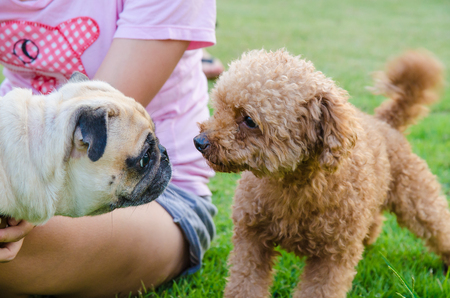1. Bringing Your Adopted Pet Home
The first few days are critical for your new pet to adjust. It’s a big transition, and your furry friend might feel overwhelmed or anxious. To help them settle in smoothly, it’s important to create a welcoming environment, establish routines, and manage their initial anxieties.
Creating a Welcoming Environment
Your home is now your pet’s home too, but they don’t know that yet! Setting up a dedicated space where they feel safe can make all the difference. Whether it’s a cozy corner with a bed and toys for a dog or a quiet room for a cat, having a consistent area helps them feel secure.
Essential Items for Your Pets First Days
| Item | Purpose |
|---|---|
| Bed or Crate | A comfortable resting place to help them feel secure. |
| Food & Water Bowls | Ensures they have access to nourishment right away. |
| Toys & Chews | Keeps them entertained and helps relieve anxiety. |
| Litter Box (for cats) | A designated spot for bathroom needs. |
| Leash & Collar (for dogs) | Essential for walks and safety. |
| Calming Aids (if needed) | Pheromone diffusers or soft music can ease stress. |
Establishing Routines
Pets thrive on routine. Feeding times, potty breaks, playtime, and bedtime should happen at the same time each day. This predictability helps them feel more at ease in their new environment.
Sample Daily Routine for an Adopted Dog
| Time | Activity |
|---|---|
| 7:00 AM | Morning walk & potty break |
| 8:00 AM | Breakfast time |
| 12:00 PM | Midday potty break & short play session |
| 6:00 PM | Dinner time |
| 8:00 PM | Evening walk & bonding time |
| 10:00 PM | Final potty break before bed |
Managing Initial Anxieties
Your pet may exhibit signs of nervousness like hiding, pacing, whining, or even refusing to eat. This is normal! Give them space but also reassure them with gentle interactions.
Tips from Real Pet Adopters:
- “I let my rescue dog explore at his own pace without forcing interaction. Within a week, he started seeking affection!” – Sarah B.
- “Playing soft music and using pheromone diffusers really helped my adopted cat relax.” – Jason L.
- “Consistency was key! Feeding my dog at the same times every day helped build trust.” – Emily R.
- “I used treats and positive reinforcement to encourage my shy pup to come out of her shell.” – Mike D.
The first few days may feel overwhelming for both you and your new pet, but patience and consistency will help build trust. Stay positive and celebrate small victories as they begin settling into their forever home!
2. Building Trust and Overcoming Challenges
Trust takes time, especially for rescued animals who may have experienced past trauma. If youve adopted a pet, you might notice behaviors that indicate fear, anxiety, or uncertainty. Understanding these challenges and working patiently with your new furry friend is key to building a strong, loving bond.
Common Behavioral Challenges in Adopted Pets
Every adopted pet has a unique history, and some may struggle with trust issues more than others. Here are some common challenges pet parents face:
| Behavioral Challenge | Possible Cause | Helpful Solutions |
|---|---|---|
| Fear of new people | Lack of socialization or past abuse | Allow slow introductions, use treats as positive reinforcement, and give your pet space to observe safely. |
| Separation anxiety | Pervious abandonment or rehoming experience | Create a consistent routine, practice short departures, and provide comfort items like a favorite blanket or toy. |
| Food aggression | Lack of food security in the past | Avoid disturbing them while eating, feed meals at regular times, and slowly introduce hand-feeding to build trust. |
| Lack of house training | No prior training or frequent changes in living situations | Use positive reinforcement when they go in the right spot and maintain a regular potty schedule. |
The Power of Patience and Positive Reinforcement
A newly adopted pet needs time to adjust to their new home. Instead of rushing the process, allow them to explore at their own pace. Use gentle encouragement and reward good behavior with praise or treats. Punishment can increase fear and slow progress, so always focus on positive reinforcement.
A Real-Life Story: How Sarah Helped Max Overcome His Fears
Sarah adopted Max, a senior rescue dog who had been abandoned multiple times. At first, Max would hide under furniture whenever someone approached. Instead of forcing interactions, Sarah let him come out when he felt comfortable. She used soft words and rewarded even small progress with his favorite treats. After weeks of patience and consistency, Max started wagging his tail when she entered the room. Over time, he became more confident and now enjoys cuddling on the couch with her.
The Importance of Routine and Safe Spaces
Your pet will feel more secure if they have a predictable routine. Feeding times, walks, play sessions, and bedtime should be as consistent as possible. Creating a safe space—like a cozy bed or crate—gives them a place to retreat when they feel overwhelmed.
Tips for Establishing Trust with Your Adopted Pet:
- Avoid sudden movements: Move calmly around your pet to prevent startling them.
- Sit at their level: Instead of reaching down from above, sit on the floor to appear less intimidating.
- Use treats wisely: Reward calm behavior rather than trying to lure them into interactions too quickly.
- Let them approach you: Give them control over interactions by allowing them to make the first move.
- Praise softly: Speak in a gentle tone so they associate your voice with comfort and safety.
The journey toward trust may take weeks or even months, but each small step forward is worth celebrating. By being patient and understanding their needs, youll help your adopted pet feel safe in their forever home.

3. Health and Veterinary Care in the First Year
Bringing home a newly adopted pet means taking on the responsibility of their health and well-being. The first year is crucial for setting up good veterinary care, handling unexpected health issues, and ensuring your pet has a happy, healthy life.
The First Vet Visit: What to Expect
Your pets first vet visit should happen within the first few weeks of adoption. This initial check-up helps establish their baseline health and address any immediate concerns. Here’s what typically happens during this visit:
| Check-Up Process | What It Covers |
|---|---|
| Physical Examination | Overall body condition, skin, fur, teeth, eyes, and ears |
| Vaccinations | Core shots like rabies, distemper, or feline leukemia (depending on species) |
| Parasite Screening | Flea, tick, heartworm, and intestinal parasite check |
| Nutritional Guidance | Diet recommendations based on age and weight |
| Microchipping | If not already done, microchipping is highly recommended |
Common Health Concerns in the First Year
No matter how healthy your new pet seems at first, surprises can happen. Some common health issues that adopted pets face include:
- Digestive Issues: Changes in diet or stress can cause upset stomachs.
- Respiratory Infections: Particularly common in shelter pets due to close quarters.
- Anxiety-Related Problems: Stress can lead to excessive licking, hair loss, or digestive troubles.
- Dental Health Concerns: Many rescue pets have neglected dental care before adoption.
- Sensitivities and Allergies: Food or environmental allergies may surface over time.
A Real Story: Dealing with an Unexpected Diagnosis
Megan adopted her cat, Luna, from a local rescue. At first, Luna seemed perfectly healthy—playful and full of energy. But within a month, Megan noticed persistent sneezing and watery eyes. A vet visit confirmed Luna had an upper respiratory infection, likely contracted at the shelter.
“I was worried because I didnt expect vet visits so soon,” Megan shared. “But the vet reassured me that with medication and rest, shed recover quickly.” After two weeks of treatment, Luna was back to her playful self.
The Importance of Preventative Care
Avoiding health issues before they start is key. Here are some preventative steps you can take:
- Regular Vet Visits: Annual check-ups help catch potential problems early.
- A Healthy Diet: Feeding high-quality food supports long-term well-being.
- Pest Prevention: Monthly flea/tick treatments prevent infestations.
- Dental Care: Brushing teeth or using dental treats reduces oral disease risk.
- Mental and Physical Stimulation: Keeping your pet active helps prevent obesity and anxiety-related illnesses.
A Lesson from Experience
“When I adopted Max, I didnt realize how important dental care was,” says Jake, who rescued his Labrador mix. “By the time he turned three, he needed a major cleaning. If Id started brushing earlier, I couldve saved him discomfort.”
The first year with your adopted pet will come with both expected and unexpected medical needs. By staying proactive with vet visits and being prepared for surprises, you’ll set your new companion up for a long and healthy life.
4. Training, Socialization, and Behavioral Growth
Bringing home an adopted pet is exciting, but the first year is filled with learning experiences for both you and your new companion. Training, socialization, and behavioral growth take time, and every pet progresses at their own pace. Here are some key training tips, important socialization milestones, and real-life success stories from experienced pet owners.
Basic Training Tips for Your Adopted Pet
Training is essential for a well-adjusted pet. Whether youre working with a puppy, an adult dog, or even a cat, consistency and patience are key. Here are some fundamental training tips:
| Training Focus | Tips & Techniques |
|---|---|
| House Training | Establish a routine, use positive reinforcement, and be patient during accidents. |
| Basic Commands | Start with “sit,” “stay,” and “come.” Keep sessions short and reward good behavior. |
| Leash Training | Use a comfortable harness, reward calm behavior, and gradually introduce distractions. |
| Biting & Chewing | Provide appropriate chew toys and redirect unwanted chewing behaviors. |
| Litter Box Training (for Cats) | Place the litter box in a quiet area and keep it clean to encourage use. |
The Importance of Socialization
Your pet’s ability to interact positively with people, animals, and new environments is crucial to their development. The earlier they experience different situations in a positive way, the more confident they’ll become.
Key Socialization Milestones
- Puppies: Introduce them to new people, sounds, surfaces, and other animals by 16 weeks.
- Kittens: Handle gently from an early age and expose them to different environments safely.
- Shelter Pets: Give them time to adjust before introducing too many new experiences at once.
- Nervous Pets: Gradual exposure with rewards helps build confidence over time.
The Role of Patience and Persistence
No two pets adjust the same way. Some may pick up training quickly, while others need extra time to feel secure. Persistence pays off—here are some real-life examples from experienced pet owners:
A Success Story: Max’s Journey to Confidence
“When we adopted Max, he was terrified of everything—cars, other dogs, even his leash! We started slow by sitting with him outside just watching the world go by. Over time, short walks turned into longer ones, and now he loves going on adventures!” —Sarah D.
A Rescue Cat Learns to Trust
“Milo hid under the couch for two weeks when we brought him home. We let him come out on his own terms while offering treats nearby. After a month of patience and gentle encouragement, he now curls up on my lap every night.” —Mark T.
Your Pet’s Progress Takes Time
The first year with your adopted pet is all about building trust through consistent training and positive experiences. Every small step forward is a victory—celebrate progress along the way!
5. Strengthening the Lifelong Bond
The first year sets the foundation for a lifetime together. It’s a journey filled with small victories, learning moments, and deep emotional connections. Many pet owners find that by the end of the first year, their adopted pet is no longer just an animal—they are family.
Building Trust Through Daily Interactions
Trust doesn’t happen overnight, especially for adopted pets who may have experienced trauma or instability in their past. Simple daily interactions play a significant role in strengthening your bond:
| Interaction | How It Helps |
|---|---|
| Consistent Feeding Schedule | Your pet learns to rely on you for stability and care. |
| Gentle Playtime | Encourages positive associations and reduces fear. |
| Cuddling & Petting | Helps build emotional connection and trust. |
| Training Sessions | Makes communication easier and strengthens teamwork. |
| Daily Walks or Exercise | Puts you in sync with your pet’s needs and energy levels. |
The Power of Routine and Patience
A structured routine gives pets a sense of security. Dogs and cats thrive when they know what to expect from their day—whether it’s mealtime, walks, or bedtime cuddles. Many new pet parents share stories of how their once-anxious pets slowly became more confident with time and consistency.
A Heartwarming Story: From Fearful to Fearless
Samantha adopted Oliver, a shy rescue dog who would cower at sudden movements. The first few months were tough—he hid under furniture, refused treats, and avoided eye contact. But Samantha didn’t give up. She spoke softly, offered treats patiently, and let Oliver set the pace. By the end of the first year, Oliver was greeting her with tail wags and even snuggling on the couch! Their patience paid off, proving that love and time can heal old wounds.
The Mutual Transformation
The bond between a pet and its owner isn’t one-sided. Just as pets grow to trust us, we also change because of them. Many pet owners report feeling less lonely, more active, and emotionally fulfilled after adopting a pet. This mutual transformation is what makes the journey so special.
Tara & Whiskers: A Story of Healing
Tara had just moved to a new city when she adopted Whiskers, a senior cat from a shelter. At first, Whiskers was distant—but over time, he started curling up next to her while she worked from home. As Whiskers grew more comfortable, Tara realized she was also healing from the loneliness of her big move. Their companionship became a source of comfort for both.
Nurturing Your Bond Beyond the First Year
The first year lays the groundwork for a lifelong relationship, but it doesn’t stop there! Continue strengthening your bond by exploring new activities together—whether it’s hiking with your dog or introducing new toys to engage your cat’s curiosity.
Tips for Ongoing Connection:
- Create New Traditions: Celebrate adoption anniversaries with special treats or outings.
- Lifelong Learning: Continue training sessions to keep your pet mentally engaged.
- Spoil Them (In Moderation): Surprise them with occasional toys or cozy spots in the house.
- Acknowledge Their Emotions: Pay attention to body language and respond with care.
- Stay Present: Put away distractions during bonding time—your pet knows when youre truly engaged!
The journey of adopting a pet is filled with ups and downs, but through patience and love, you’ll create an unbreakable connection that lasts a lifetime.


